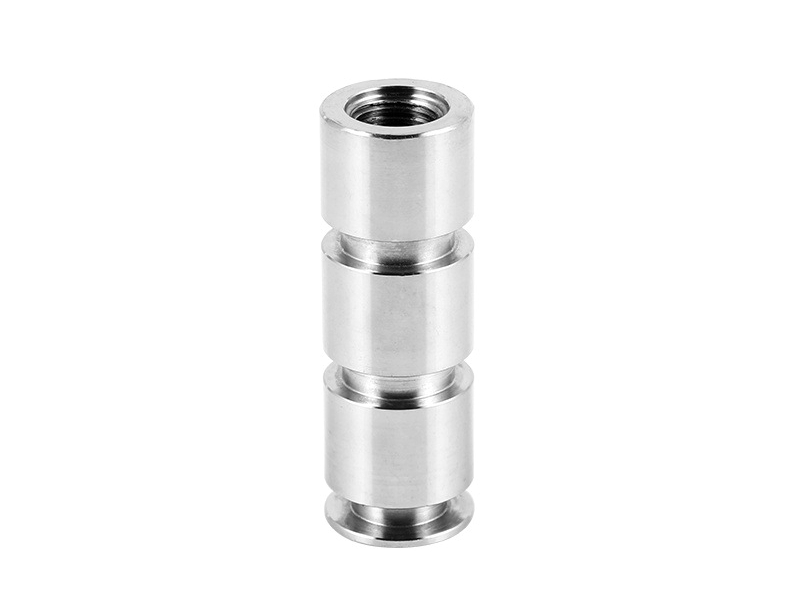Carbon Steel CNC Machining for Heavy-Duty Oil and Gas Equipment
Introduction to Carbon Steel CNC Machining for Oil and Gas Equipment
In the oil and gas industry, heavy-duty equipment must withstand the extreme conditions of deep drilling, high pressure, and abrasive environments. Carbon steel CNC machining offers a robust solution for manufacturing durable, high-strength parts for oil and gas applications. Carbon steel's excellent strength-to-weight ratio, affordability, and machinability make it ideal for components like valve bodies, drill collars, structural supports, and connectors essential in demanding oil and gas operations.
CNC machining allows for the production of complex, high-precision carbon steel parts with tight tolerances, ensuring that the components meet the stringent safety and performance requirements of the oil and gas industry. Manufacturers can use advanced CNC technologies to create custom-designed parts that maximize efficiency and operational longevity.
Material Performance Comparison for Carbon Steel Parts in Oil and Gas Equipment
Material | Tensile Strength (MPa) | Thermal Conductivity (W/m·K) | Machinability | Corrosion Resistance | Typical Applications | Advantages |
|---|---|---|---|---|---|---|
370 | 50 | Excellent | Moderate | Structural supports, pipe fittings | Good weldability, cost-effective | |
600 | 45 | Good | Moderate | Drill collars, shafts | High strength, good toughness | |
750 | 44 | Good | Good | Heavy-duty fittings, connectors | Excellent strength, hardenability | |
850 | 42 | Moderate | Good | High-pressure valve parts, shafts | High tensile strength, fatigue resistance |
Material Selection Strategy for Carbon Steel Parts in Oil and Gas Equipment
Carbon Steel 1018 provides good machinability and weldability with moderate tensile strength (370 MPa), making it suitable for less demanding applications like structural supports and pipe fittings where cost-effectiveness and ease of fabrication are essential.
Carbon Steel 1045 offers increased strength (600 MPa) and toughness, making it an ideal material for drill collars and shafts. It performs well in high-stress applications where both strength and durability are required.
Carbon Steel 4140 is widely used in heavy-duty oil and gas applications due to its excellent strength (750 MPa) and hardenability. It is commonly found in heavy-duty fittings, connectors, and other critical components that require superior wear resistance.
Carbon Steel 4340 is known for its high tensile strength (850 MPa) and fatigue resistance. It is perfect for high-pressure valve parts, shafts, and other heavy-duty components that must perform under extreme conditions.
CNC Machining Processes for Carbon Steel Parts in Oil and Gas Equipment
CNC Machining Process | Dimensional Accuracy (mm) | Surface Roughness (Ra μm) | Typical Applications | Key Advantages |
|---|---|---|---|---|
±0.005 | 0.2-0.8 | Complex parts, valve bodies, flanges | High precision, intricate geometries | |
±0.005-0.01 | 0.4-1.2 | Cylindrical components, shafts, drill collars | Excellent rotational accuracy | |
±0.01-0.02 | 0.8-1.6 | Precision mounting holes, pipe fittings | Accurate hole placement | |
±0.002-0.005 | 0.1-0.4 | High-finish surfaces, sealing components | Superior surface smoothness |
CNC Process Selection Strategy for Carbon Steel Parts
5-Axis CNC Milling is ideal for producing complex and high-precision carbon steel parts like valve bodies and flanges, enabling intricate geometries with tight tolerances (±0.005 mm) and fine surface finishes (Ra ≤ 0.8 µm).
Precision CNC Turning ensures high rotational accuracy (±0.005 mm) for cylindrical components such as shafts and drill collars, providing the precision necessary for critical oil and gas applications.
CNC Drilling guarantees precise hole placement (±0.01 mm) for parts like pipe fittings and connectors, ensuring that the components fit perfectly in high-pressure and high-temperature systems.
CNC Grinding is used to achieve fine surface finishes (Ra ≤0.4 µm) for sealing components and other parts requiring smooth, high-quality surfaces that ensure a proper fit and function in oil and gas equipment.
Surface Treatment Performance for Carbon Steel Parts in Oil and Gas Applications
Treatment Method | Surface Roughness (Ra μm) | Corrosion Resistance | Hardness (HV) | Applications |
|---|---|---|---|---|
0.8-1.6 | Good (>500 hrs ASTM B117) | N/A | Carbon steel fittings, valve bodies | |
0.2-0.8 | Superior (>1000 hrs ASTM B117) | N/A | Heavy-duty connectors, pipe joints | |
0.1-0.4 | Excellent (>1000 hrs ASTM B117) | 900-1000 | Valve parts, wear-resistant components | |
0.6-1.2 | Excellent (>800 hrs ASTM B117) | Moderate | Structural components, flanges |
Typical Prototyping Methods
CNC Machining Prototyping: Highly accurate prototypes (±0.005 mm) for functional testing of carbon steel components in oil and gas applications.
Rapid Molding Prototyping: Quick-turnaround prototypes for carbon steel parts such as fittings, seals, and valve bodies.
3D Printing Prototyping: Fast, cost-effective prototyping (±0.1 mm accuracy) for initial design validation of carbon steel parts.
Quality Inspection Procedures
CMM Inspection (ISO 10360-2): Dimensional verification of carbon steel parts with tight tolerances.
Surface Roughness Test (ISO 4287): Ensures surface quality standards for precision components.
Salt Spray Test (ASTM B117): Verifies corrosion resistance of carbon steel parts.
Visual Inspection (ISO 2859-1, AQL 1.0): Confirms aesthetic and functional quality of carbon steel components.
ISO 9001:2015 Documentation: Ensures traceability, consistency, and compliance with industry standards.
Industry Applications
Oil and Gas: Heavy-duty fittings, valve bodies, drill collars, pump components.
Automotive: Engine components, exhaust parts, structural supports.
Aerospace: Aircraft parts, landing gear components, structural frames.
FAQs:
Why is carbon steel used in heavy-duty oil and gas equipment?
What are the advantages of CNC machining for carbon steel parts?
How do surface treatments enhance the durability of carbon steel components?
Which carbon steel grades are best suited for oil and gas applications?
What are the best prototyping methods for carbon steel parts used in the oil and gas industry?

